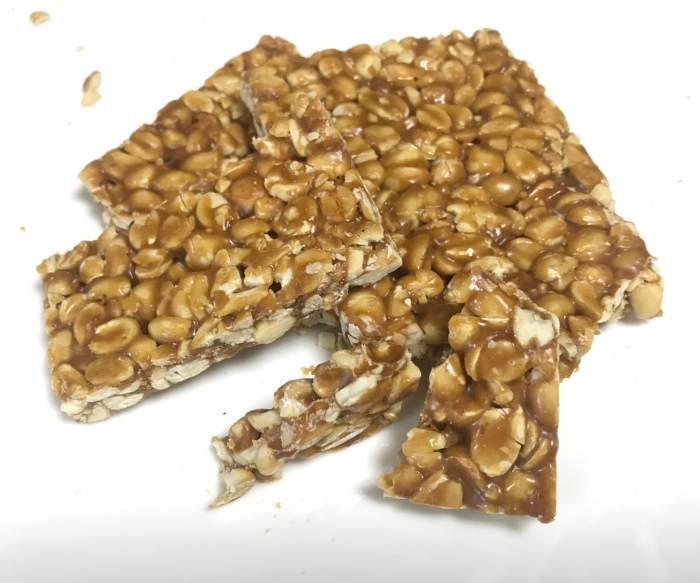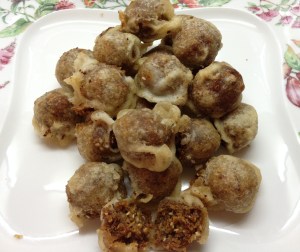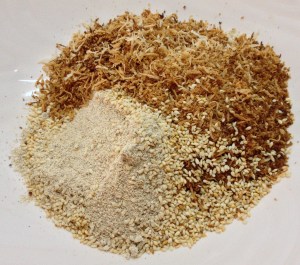Thiruvathirai, is an auspicious day for Hindus, especially Shaivites. January 10, 2020 was the Day of Thiruvathirai. It is the day to celebrate Lord Shiva, in the form of Adavallan – the Cosmic Dancer. It is celebrated on the full moon night of the Tamil month of Margazhi, which falls between mid December and mid January of the Gregorian Calendar. What I know, is Tiruvathirai is celebrated in Tamilnadu and Kerala, the southern states of India.
Society has always found new philosophies and concepts to make Religion, an indispensable part of an individual’s life. Stories and Narratives of different eras, that are documented in various forms of literature and also those which are not documented, yet transferred through word of mouth, may form the basis of value based religious education.
To me, language and culture are synonymous to one’s roots, but religion is not. Not getting too much into this, I stay put here, as a Food Blogger alone.
That is why, we will not discuss about the religious aspects of Thiruvathirai, but the literary and culinary aspects of the special day.
Tamil Bhakti Literature consists of thousands of hymns, composed by several Saiva Saints, in praise of Lord Shiva, between 6th century ACE and 12th century ACE. Thirunavukkarasar, the Saint who lived in the 6th and 7th centuries ACE and Thirugnanasambandar, who lived in the 7th century ACE, have sung about the auspicious day of Thiruvathirai.
“ஊர்திரை வேலை யுலாவும் உயர்மலைக்
கூர்தரு வேல்வல்லார் கோற்றங் கோள் சேரிதனில்
கார்தரு சோலைக் கபாலீச்சரம் அமர்ந்தான்
ஆதிரைநாள் காணாதே போதியார் பூம்பாவாய்”
‘Athirai naal kaanathe….’ says the last verse by Sambandar.
“முத்து விதான மணிப்பொற் கவரி முறையாலே
பக்தர்க ளோடு பாவையர் சூழப் பலிப்பின்னே
வித்தகக் கோல வெண்டலை மாலை விரதிகள்
அத்தனாரூ ராதிரை நாளா லதுவண்ணம்”
‘Athan Aarur Athirai naal…’ says the last verse above, by Thirunavukkarasar
These are literary evidences, that mention about the special day of Thiruvathirai, in praise of Lord Shiva, that go back almost 1500 years from today.
As a food blogger, who wishes to transfer the culinary legacies to the next generation, what is important to me, is the Gastronomy involved in the celebration of festivals. Celebrating cultural legacies and honouring heritage through these legacies, are key aspects in passing on the essence of one’s roots to our offsprings.
The festival of Thiruvathirai, is celebrated with Thiruvathirai Kali– a delicacy made with rice, split green gram and jaggery- that is cooked to a Pudding/Halwa like consistency. Kali might be Tamil word for Halwa… (I have already posted another Kali – Ulundhankali – which is made with black gram and palm jaggery).
This is how I made it, the day before yesterday.
Thiruvathirai Kali

Ingredients
- pacharisi/raw rice – 1 cup
- paasi paruppu/skinned, split green gram – 1/4 cup
- vellam/jaggery – 1 1/4 cup (can use 1 cup if less sweet preferred)
- water (to cook the kali) – 2 cups
- elakkai podi/cardamom powder – 1 tsp
- chukku podi/dry ginger powder – 1 tsp
- nei/clarified butter – 2 tbsp
- cashew nuts – 10 no.s, halved
- grated coconut – 1/2 cup (optional- I didn’t add this)
Method of Preparation
- Dry roast rice and lentils separately, till they turn golden
2. Grate 1 1/4 cups of jaggery and add 2 cups water and let the jaggery dissolve

3. Once dissolved, strain for impurities and place in a hard bottomed vessel. This is the pan, in which kali would be stirred.
4. Dry grind the roasted rice and lentil. Keep on a plate or bowl.

5. Place the hard bottomed pan with Jaggery water on stove. Add cardamom and dry ginger powder. Bring to boil.

6. Once the jaggery water starts to boil, add the rice-lentil powder slowly. Keep stirring before lumps form.

7. Very quickly, the flour will start to thicken – almost like Upma.
8. Since the rice is roast and ground, it will thicken fast; An additional informative tip from Amma, unroasted raw rice powder will be sticky, but this roasted flour will have a coarse and dry consistency.. and is easier and quicker to get cooked.

9. Now, the Kali is almost done; keep stove in sim or if you fear it might burn a bit, switch off stove.
10. In another pan, deep fry cashew nuts in clarified butter till golden.

11. Add the clarified butter and cashew nuts into the Kali and mix well.

12. Switch on stove. Let the flame be in sim position, and keep stirring with the ladle. When the Kali doesn’t stick to the pan, remove and serve.
13. Feel free to add more nei/clarified butter. it only enhances the flavour.
14. If using freshly grated coconut, add before switching off the stove. Mix well and serve hot.









































































